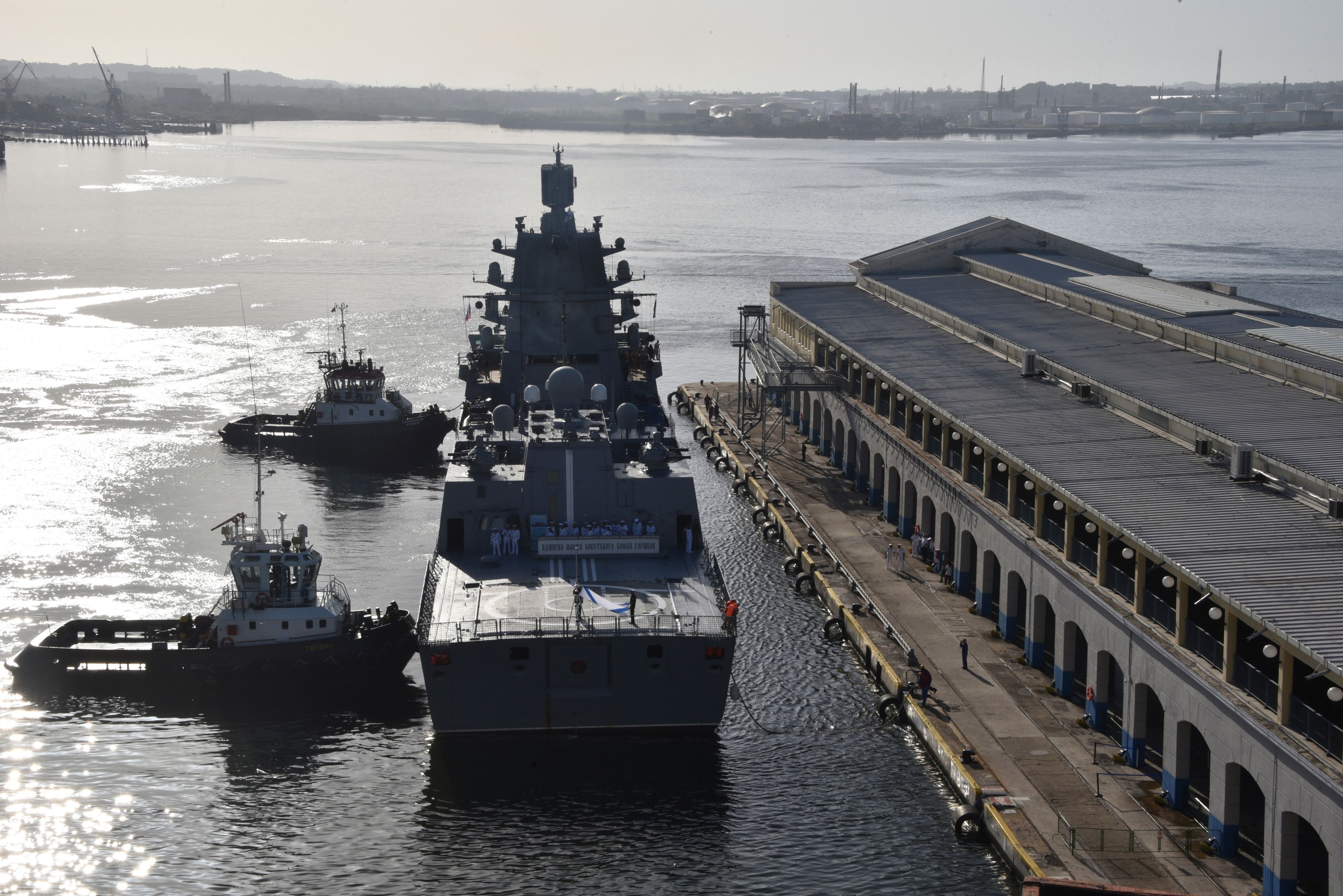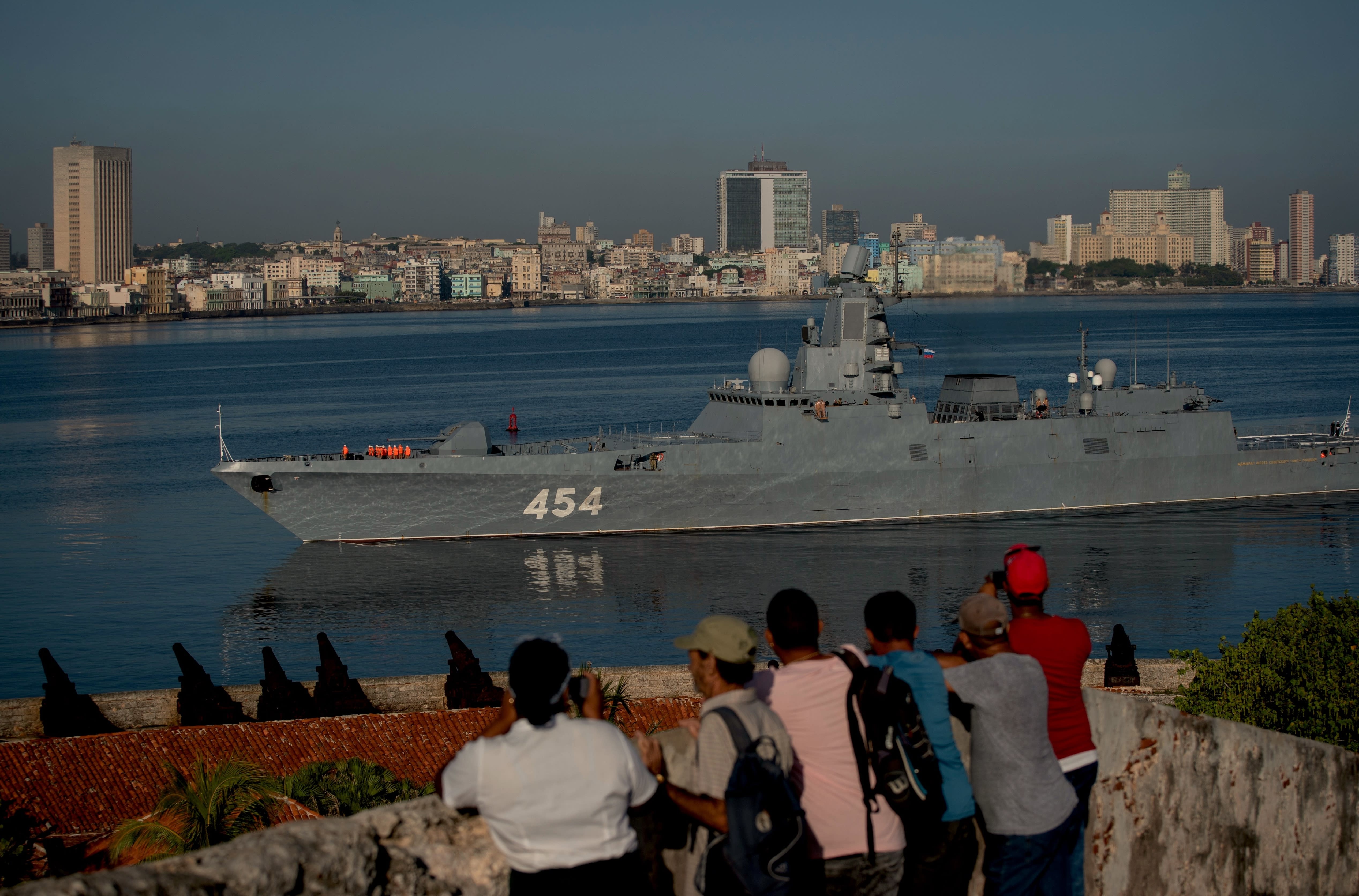Historical Context and Significance: Russian Navy Cuba

The Russian navy’s presence in Cuba has a long and complex history, dating back to the Cold War era. In 1962, the Soviet Union secretly deployed nuclear missiles to Cuba, sparking the Cuban Missile Crisis. The crisis brought the world to the brink of nuclear war and led to a significant increase in the Russian navy’s presence in Cuba.
After the Cuban Missile Crisis, the Soviet Union continued to maintain a naval presence in Cuba as a way to project power in the Western Hemisphere. The Russian navy’s presence in Cuba has also been used to support Russian military operations in the region, such as the Russian intervention in the Syrian Civil War.
Political and Military Implications
The Russian navy’s presence in Cuba has significant political and military implications. The presence of Russian warships in Cuba gives Russia a strategic advantage in the Caribbean Sea and the Gulf of Mexico. It also allows Russia to project power into the Western Hemisphere and to deter potential threats to its interests in the region.
The Russian navy’s presence in Cuba has also been a source of tension between Russia and the United States. The United States has long viewed the Russian navy’s presence in Cuba as a threat to its national security. In recent years, the United States has taken steps to counter the Russian navy’s presence in Cuba, including increasing its own military presence in the region and imposing sanctions on Russia.
Cuban Missile Crisis, Russian navy cuba
The Cuban Missile Crisis was a major turning point in the history of the Russian navy’s presence in Cuba. The crisis brought the world to the brink of nuclear war and led to a significant increase in the Russian navy’s presence in Cuba. After the crisis, the Soviet Union continued to maintain a naval presence in Cuba as a way to project power in the Western Hemisphere.
The Cuban Missile Crisis had a profound impact on the Russian navy. The crisis showed the importance of naval power in the modern world and led to a significant increase in the Russian navy’s budget and capabilities. The crisis also led to the development of new naval technologies, such as nuclear-powered submarines and ballistic missiles.
Current Activities and Capabilities

The Russian navy currently maintains a limited presence in Cuba, with a focus on intelligence gathering, anti-submarine warfare, and naval exercises. The Russian navy’s activities in Cuba are primarily conducted by a small number of ships and submarines, which are based at the port of Cienfuegos.
The Russian navy’s capabilities in Cuba are limited, but they are still significant. The Russian navy’s ships and submarines are equipped with a variety of weapons, including anti-ship missiles, torpedoes, and depth charges. The Russian navy also has a number of aircraft that can be used for reconnaissance and anti-submarine warfare.
The presence of the Russian navy in Cuba has the potential to impact regional security. The Russian navy’s ships and submarines could be used to support Russian military operations in the Caribbean Sea or the Gulf of Mexico. The Russian navy’s presence in Cuba could also be seen as a provocation by the United States, which has a long history of conflict with Russia.
Ships
The Russian navy’s ships in Cuba include a number of frigates, corvettes, and submarines. The frigates and corvettes are armed with a variety of anti-ship missiles, torpedoes, and depth charges. The submarines are armed with torpedoes and cruise missiles.
Submarines
The Russian navy’s submarines in Cuba are a mix of diesel-electric and nuclear-powered submarines. The diesel-electric submarines are armed with torpedoes, while the nuclear-powered submarines are armed with torpedoes and cruise missiles.
Aircraft
The Russian navy’s aircraft in Cuba include a number of reconnaissance aircraft and anti-submarine warfare aircraft. The reconnaissance aircraft are used to gather intelligence on enemy forces, while the anti-submarine warfare aircraft are used to hunt and destroy enemy submarines.
Future Prospects and Implications
The future prospects of the Russian navy’s presence in Cuba remain uncertain. The Russian government has stated that it has no plans to establish a permanent military base in Cuba, but it has also indicated that it will continue to use the island for naval exercises and other military activities. The United States has expressed concern about the Russian navy’s presence in Cuba, and it has warned that it will take steps to prevent Russia from establishing a permanent military presence on the island.
The potential implications of the Russian navy’s presence in Cuba are significant. The presence of Russian naval forces in Cuba could give Russia a strategic advantage in the Caribbean Sea and the Gulf of Mexico. It could also allow Russia to project power into the Western Hemisphere and to threaten U.S. interests in the region. The presence of Russian naval forces in Cuba could also lead to an increase in tensions between the United States and Russia.
The potential impact of the Russian navy’s presence in Cuba on global security is also significant. The presence of Russian naval forces in Cuba could increase the risk of a military conflict between the United States and Russia. It could also lead to an arms race in the region and to a decrease in global stability.
Potential implications for the United States
The Russian navy’s presence in Cuba could have a number of potential implications for the United States. First, it could give Russia a strategic advantage in the Caribbean Sea and the Gulf of Mexico. This could allow Russia to project power into the Western Hemisphere and to threaten U.S. interests in the region. Second, the presence of Russian naval forces in Cuba could lead to an increase in tensions between the United States and Russia. This could increase the risk of a military conflict between the two countries. Third, the presence of Russian naval forces in Cuba could lead to an arms race in the region. This could further increase tensions between the United States and Russia and could lead to a decrease in global stability.
Russian navy cuba – The recent standoff between the Russian Navy and Cuba over the docking of a Russian spy ship in Havana has raised concerns about the growing Russian presence in the region. However, it is important to remember that Cuba has a long history of hosting foreign military vessels, including those from the United States.
In fact, Cuba was a key staging ground for the US during the world cup qualifiers in 1994. While the Russian Navy’s presence in Cuba is a cause for concern, it is also important to recognize that Cuba has the right to host foreign military vessels as part of its sovereign territory.
The Russian Navy’s presence in Cuba during the Cold War was a significant geopolitical event. While the world watched with bated breath, a lesser-known figure emerged: Solomon Choi, a martial artist renowned for his 16 handles. Choi’s mastery of this intricate technique, as detailed in solomon choi 16 handles , mirrors the strategic maneuvering of the Russian Navy during the Cuban Missile Crisis, a testament to the subtle power dynamics that shape international relations.
The Russian Navy’s presence in Cuba during the Cold War was a major source of tension between the United States and the Soviet Union. The Soviet ships were stationed at the port of Mariel, and their presence was seen as a threat to the security of the United States.
In response, the United States imposed a naval blockade of Cuba, which led to the Cuban Missile Crisis. The crisis was eventually resolved through diplomacy, but the Russian Navy’s presence in Cuba remained a source of concern for the United States.
In recent years, the Russian Navy has again become more active in the Caribbean, and its presence in the region has raised concerns among some observers. The Russian Navy’s increased activity in the Caribbean is seen as a sign of Russia’s growing interest in the region, and it could have implications for the euro 2024 security of the United States and its allies.
The Russian Navy’s presence in Cuba is a reminder of the Cold War, and it is a reminder of the potential for conflict between the United States and Russia.
The Russian navy’s presence in Cuba during the Cold War was a major concern for the United States. The two superpowers were locked in a tense standoff, and the presence of Soviet nuclear missiles in Cuba brought the world to the brink of nuclear war.
However, the Cuban Missile Crisis was eventually resolved peacefully, and the Russian navy withdrew from Cuba. This helped to ease tensions between the two countries and paved the way for a period of détente. However, the rivalry between the United States and the Soviet Union continued to simmer, and the two countries would eventually clash again in proxy wars around the world, including the USA vs.
Brazil conflict. Despite these setbacks, the Russian navy’s presence in Cuba during the Cold War remains a reminder of the dangers of nuclear proliferation and the importance of diplomacy in resolving international conflicts.
The Russian navy’s presence in Cuba during the Cold War was a major source of tension between the United States and the Soviet Union. However, even in the midst of such high-stakes geopolitical maneuvering, there were moments of unexpected camaraderie.
One such instance occurred during the 1987 Copa America soccer tournament, when Soviet sailors stationed in Cuba rooted for the Argentine team alongside their American counterparts, momentarily setting aside their differences in the shared spirit of sportsmanship.
